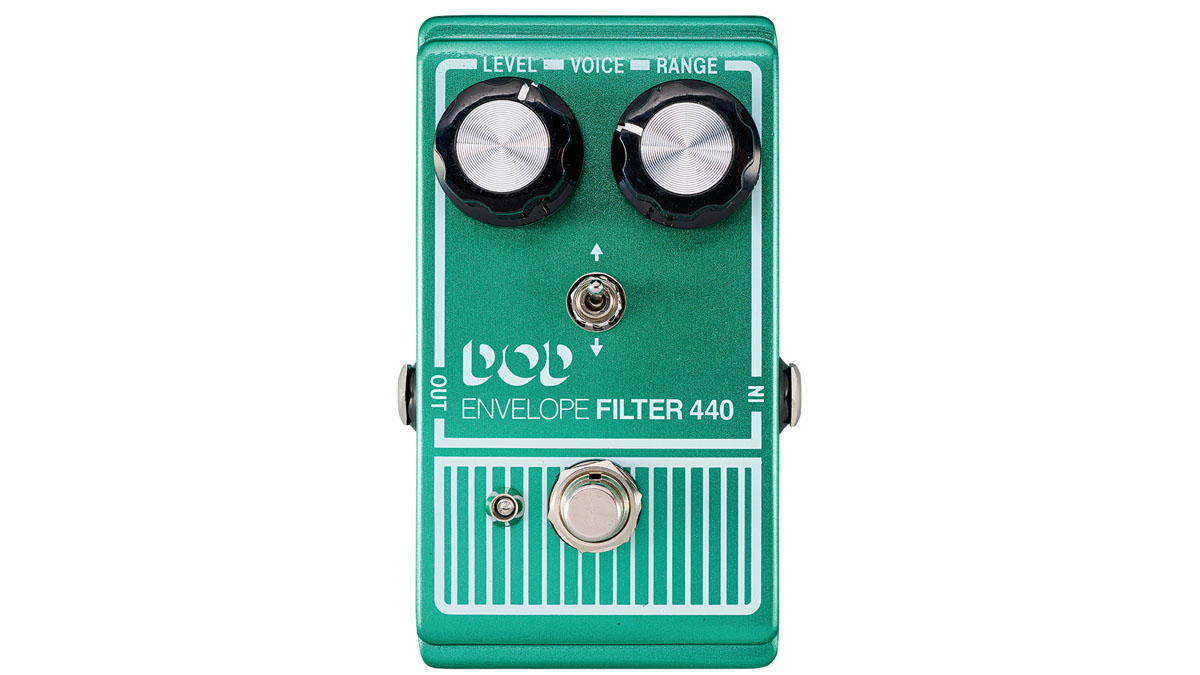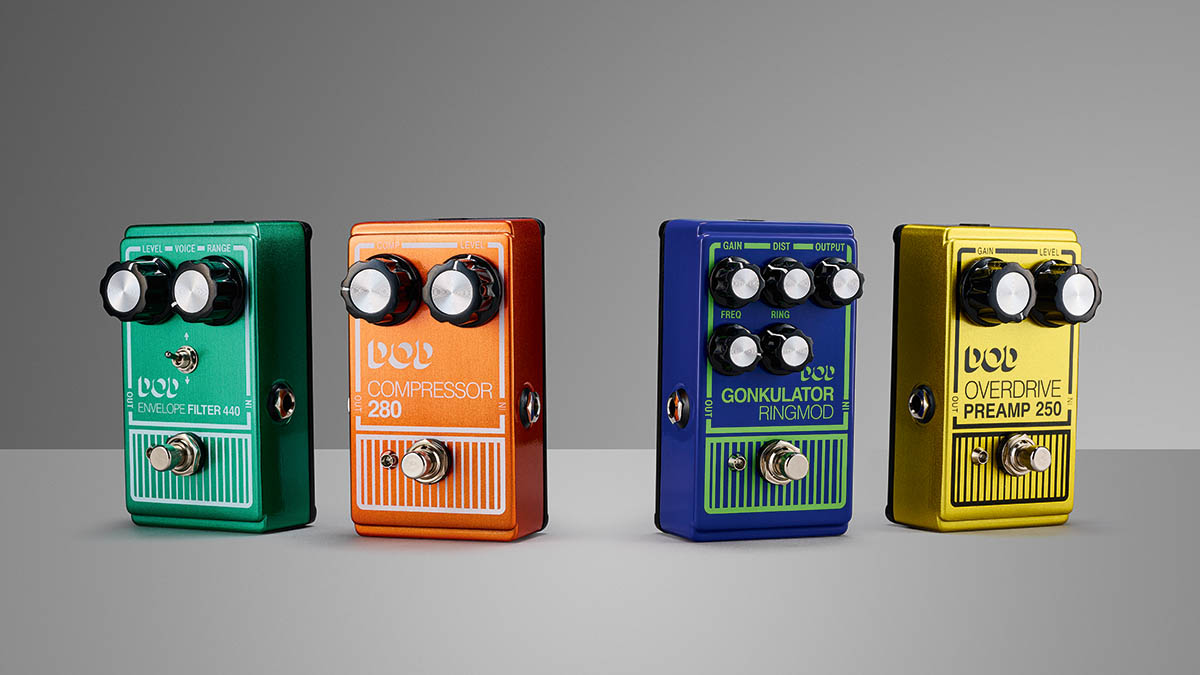
The Envelope Filter is one of the most enduring pedals from this era of DOD, simply due to its wide availability. Envelope filter and auto-wah on guitar is an effect that is niche by design.
Most players who use filter effects tend to stick to the expressive capabilities of the wah pedal. That said, there’s always the odd player who prefers the more synth-like, locked-in sweep of an envelope filter.
The controls here are deceptively simple. The level control is for the sensitivity of the envelope, or how it will react to your playing, and the range is the frequency range of the envelope sweep. There’s a lot of depth to be found between these two, and dialling them in for a sound that works for you will likely take some time and experimentation.
Like any synth-style pedal, there’s a strong sense that the Envelope Filter is designed more for bass guitar than guitar. Switching over to a bass with Jazz Bass pickups, it’s no surprise to find that it indeed does work well, particularly when paired with a fuzz.

The voicing control can be used to emphasise a different register in the sweep, making it work better for bass. Whether on bass or electric guitar, the Envelope Filter is incredibly sensitive to pedal order. This means you may have to re-jig an existing ’board to fit around it.
The most dramatic effects are to be had when all distortions, drives, and fuzzes are following it rather than in front. In front, they mess with the sensitivity and the result is often scratchy and weak.
With a decent distortion after it, the 440 comes alive. Dramatic drop tuned sweeps emphasise percussive hits, and the filter opening throughout a phrase can create attention-grabbing lead lines.
Specs
- PRICE: $129 / £105
- TYPE: Envelope filter
- CONTROLS: Level, Voice, Range
- SOCKETS: Input, Output, Power
- BYPASS: True bypass
- POWER: 9VDC Centre-negative or battery
- CONTACT: DigiTech







